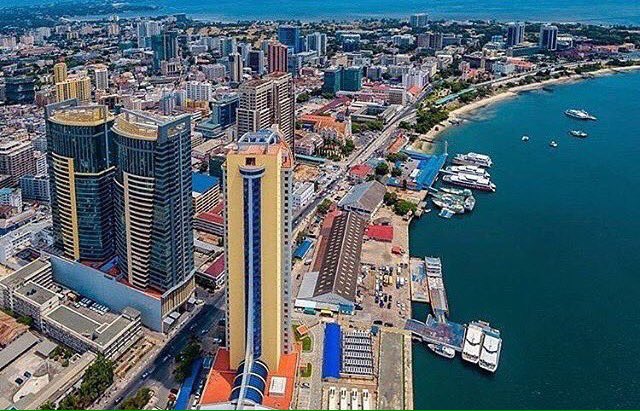By TZ Business News Staff.
About two thirds of households in Tanzania’s business capital, Dar es Salaam, share toilets where they live, and there is some indication access rates are relapsing according to a World Bank survey report titled ‘Africa’s Cities: Opening Doors to the World’.
However, sanitation gets better on peripheries of this East African coastal city.
The most common form of sanitation in Dar es Salaam is a pit latrine. Other forms of improved sanitation are rare, while access to water and sanitation is very limited in the city but slightly higher in peripheral areas: “Flush toilets connected to a septic tank are more common on the periphery,” the report says.
Access to piped water is also very limited throughout the city; even people with access to piped water in their homes face challenges related to service quality. Households reported having fewer than five days and 14 hours a day of water service in the previous seven days. The low service quality forces more affluent households and businesses to rely on boreholes–which leads to salt water intrusion.
‘Africa’s Cities: Opening Doors to the World’ was authored by Somik Vinay Lall, J. Vernon Henderson, Anthony J. Venables with nine assistants. The report discusses how 64 African cities in Sub Saharan Africa are built and spatially organized in relation to their attractiveness to investors.
Large African cities grow as fast as 4% annually. Urban areas comprise 472 million people and that number will double over the next 25 years as more migrants are pushed to the cities from the countryside. Also important are the relatively high concentrations of economic density within African cities. Urban workers crowd into informal settlements near the city centre in order to access job opportunities not found elsewhere.
 The cities are crowded, disconnected and costly to live in. They have developed as collections of small and fragmented neighbourhoods, lacking reliable transportation and limiting workers job opportunities while preventing firms from reaping ‘scale and agglomerated benefits’.
The cities are crowded, disconnected and costly to live in. They have developed as collections of small and fragmented neighbourhoods, lacking reliable transportation and limiting workers job opportunities while preventing firms from reaping ‘scale and agglomerated benefits’.
For households and firm’s higher nominal wages and transaction costs deter investors and trading partners. Workers’ high food, housing and transport costs increase labour costs to firms and thus reduce expected return on investment.
Authors compare Tanzania’s business capital, Dar es Salaam, to South Africa’s port city of Durban on the south eastern coast of the Indian Ocean. “The story is quite different in Durban, where more than two-thirds of households have access to piped water,” the report says. “Durban is also far ahead of Dar es Salaam…. Almost 92% of households in the urban core are connected to the sewerage system but only 19% in the outskirts of the city and 45% in shanty areas.”
One reason African cities performs poorly is that Africa is poorer than other regions were at comparable stages of urbanization. As a result, housing investment lags such investment in low-and middle-income economies elsewhere, and cities are relatively unbuilt.
Authors argue, however, that “poverty itself is not the problem, however: It locks cities into low development traps only if cities are spatially dispersed and disconnected, unable to attract investment with efficiencies from agglomeration…. Even poor cities can become livable when they are developed in more integrated manner,” the report says.
Cities in Sub-Saharan Africa are experiencing rapid population growth. Yet their economic growth has not kept pace. Why? One factor might be low capital investment, due in part to Africa’s relative poverty. This study has however identified a deeper reason: African cities are closed to the world.
Compared with other developing cities, cities in Africa produce few good and services for trade on regional and international markets. To grow economically as they are growing in size Africa’s cities must open their doors to the world.
“From a policy standpoint, “the report says, “the answer must be to address the structural problems affecting African cities. Foremost among these problems are institutional and regulatory constraints that misallocate land and labor, fragment physical development and limit productivity.
“As long as African cities lack functioning land markets and regulations and early, co-ordinated infrastructure investments, they will remain local cities; closed to regional and global markets, trapped into producing only locally traded goods and services, and limited in their economic growth,” authors say.







